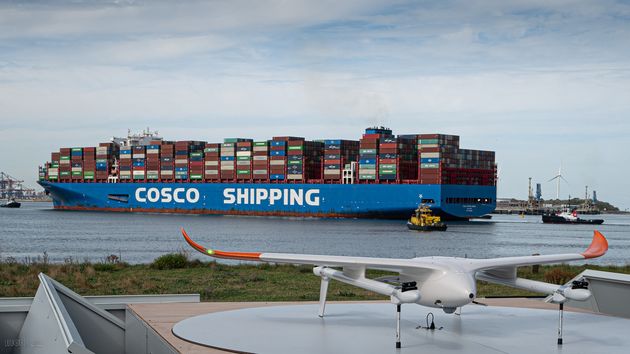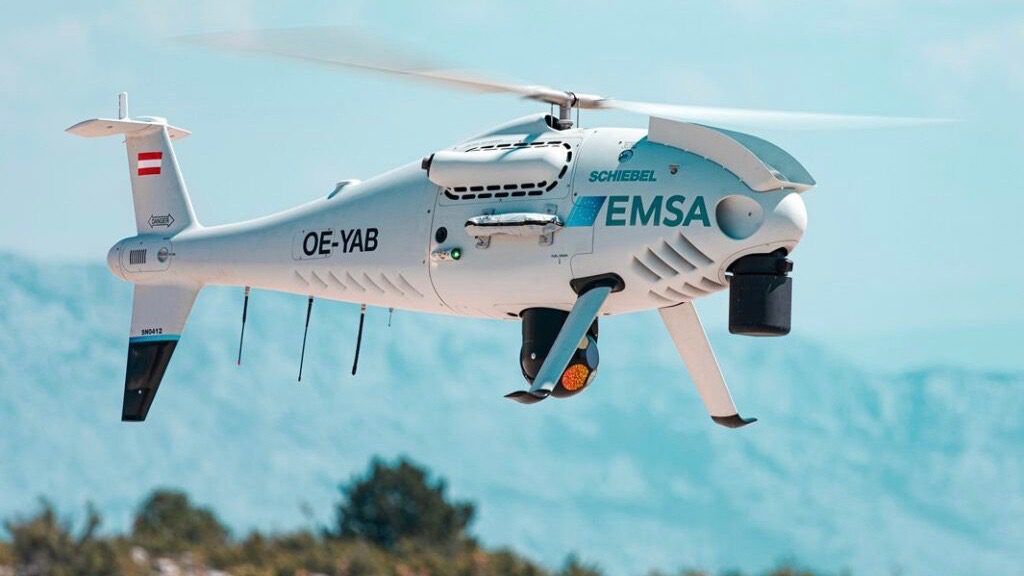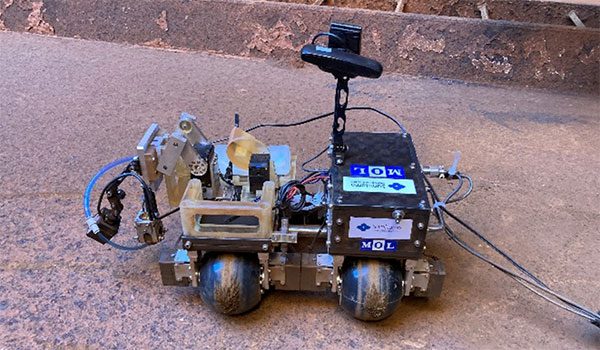28 November 2024
Drone inspections for air and sea pollution in Rotterdam

The Port of Rotterdam Authority will test drone modules to conduct sea-going and inland shipping inspections to tackle pollution.
Don’t be surprised if you see a white-orange drone fly over Maasvlakte and Europoort on one specific day of the week in the next few months. It’s the newest model of Dutch drone manufacturer Avy, the Avy Aera 3. The drone takes off automatically from a docking station installed at the Rotterdam-Rijnmond Pilotage Service at Pistoolhaven.
Sea-going and inland shipping inspections
The Port of Rotterdam Authority wants to find out if the drone is suitable for supporting inspectors and shipping masters in their work. The drone trials focus on sea-going and inland shipping inspections by the Harbour Master’s Division. Particularly, on bunkering, water pollution, ship-to-ship transfer, zoning for hazardous substances, shore-to-ship transfer, air pollution (smoke or soot), and repairs on board vessels. For instance, if the drone detects an open tank filler cap, this might indicate an illegal degassing by the vessel. Therefore, will call for taking a closer look.
Specifications Avy Aera 3
The drone has a wing span of 2.40 metres and a cruise speed of 90 kilometres per hour. Moreover, it will have a 95-kilometre range at low energy consumption. Two or three drones would suffice to cover the entire port area and have a drone over the spot quickly when an incident occurs. Additionally, this drone can carry small cargoes of up to 3 kilos. For instance, refrigerated medical supplies, vessel parts, or cargo samples.
Airspace use agreements
On flight days, operations always begin with a briefing with the NHV helicopter pilots, who also operate on the Pilotage Service site. The drone and helicopters share the same airspace. Hence, there should be clear rules in place as to how this airspace is used. Piloting, search and rescue operations by NHV always have priority over drone operations, for instance.
Source: Port of Rotterdam
See Also
Portugal-based European Maritime Safety Agency (EMSA), together with Germany’s Federal Maritime and Hydrographic Agency (BSH), is conducting a large-scale emissions monitoring campaign using drones to measure sulphur content, scheduled to begin later this month.

Drones to measure sulphur content of ships in the Baltic Sea
EMSA, together with BSH, is conducting a large-scale emissions monitoring campaign using drones to measure suplhur content.


